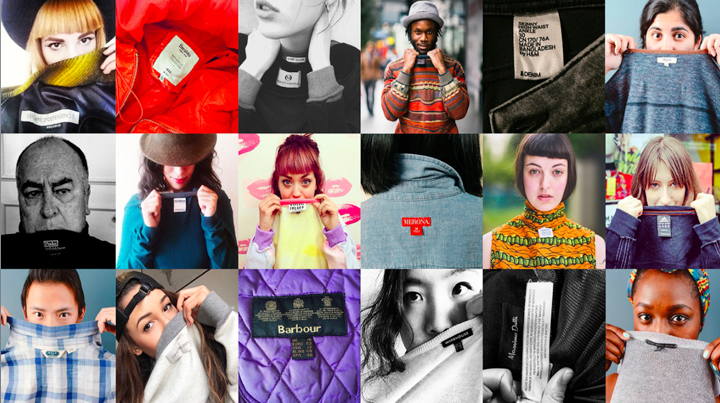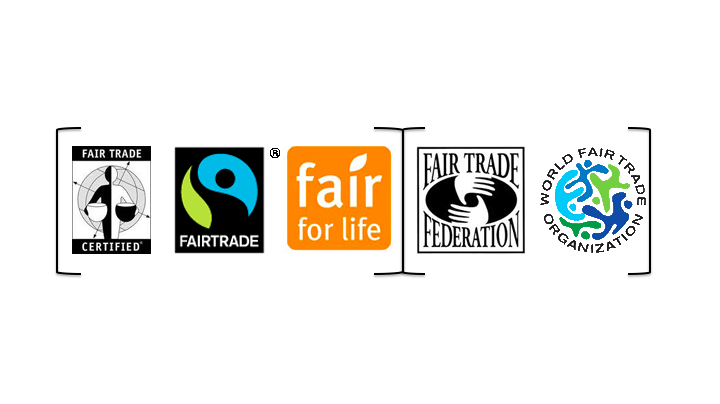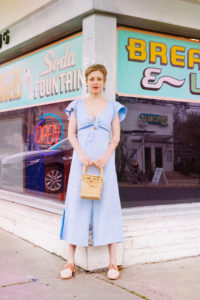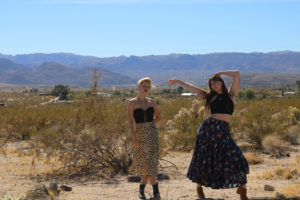
If you flip your food over to read the ingredients or hunt for the label inside your clothes instead of the hang-tag after you’ve taken them off their pegboard shelves, then you’ve probably asked this question. So, really, what separates food from apparel here? Why can’t the fair trade seal of approval on a chocolate bar not be put on a dress?
For starters, let’s look at the fair trade model. At face value, I think most of us recognize that fair trade stands for ethical treatment of workers. That’s the beauty of the model: accessibility to the mainstream. As fair trade has grown, however, many argue that it’s bent to corporate interests and softened its stance on workers’ rights. Still, no one can discredit the progress its made in motivating consumers to take action on a social issue – all through a simple food label.
Four years ago, the Rana Plaza factory collapsed in Bangladesh and the fashion industry reached a tipping point. The event haunted astute consumers and motivated them to demand change. They rallied behind Fashion Revolution day and moved brands like Nike to restructure their supply chains. Other companies began restoring their manufacturing in America. Smaller, indie labels rose to prominence. It was a movement and still is with many parallels to food industry reform.
But there’s a key difference: fashion didn’t develop a straightforward labeling system. In the absence of this, cash cow giants like Zara remained at the top. Where was fair trade in this conversation? Why wasn’t the label being printed on hang-tags to make it easier for consumers to buy ethically? Because it turns out, fashion is much more complicated than food.
Recently, I’ve been talking to a few women who work in fair trade and it hit me that I wasn’t well-versed in the topic. Through my conversations with them and some research of my own, I found out the answer to this question.
Breaking down the fair trade label
First things first, understanding what fair trade actually means. The image below has all the labels you’ve probably seen on your food – a soup of fair trade labels – if you will. This may be overwhelming, but in general, you just need to know they show relatively the same thing: that a business is committed to more sustainable trading partnerships based on dialogue and transparency, that it’s seeking greater equity in international trade, and that it respects the rights of workers in developing countries.
The first three are ‘certifications’ and last two are ‘member organizations.’ And it’s this small distinction that matters to the fashion industry.

Why it doesn’t [exactly] work for clothing
Certifications are for simple products that can be traced back to the farm level. So that’s why you often see them on your coffee, bananas or chocolate, but not on your clothing labels. The fashion supply chain is incredibly complicated and blended textiles make it impossible to apply a single-origin label on a tag. There is, however, one exception to this: Cotton. Technically speaking, your T-shirt or undies can have a certification on the label.
Other products, like jewelry and blended fibers, can still be fairly traded, there’s just no system in place to monitor their entire supply chains. This is where member organizations, like the FTF and WFTO come in. Clothing brands can pay to be a part of these, in which case they are rigorously audited. You can look for the logos of member orgs on a brand’s websites and marketing materials, but they won’t be printed on the hang tags [that’s due to a legal regulation].
I’m not an expert on fair trade, so this bit was just meant to be an introduction to the subject. If you’re interested in learning more, I suggest this handbook by the Equal Exchange co-op. It’s a quick read and will give you a historical perspective on how fair trade came to be and the struggles the movement has gone through with increased consumer demand. Most importantly, it will teach you how to tell if a label has been slapped on a product to play to your ‘conscious consumer’ intent, or if it actually reflects the principles of fair trade.
In the future, these standards could change with the work that the Sustainable Apparel Coalition is doing to create the Higg Index [think ethical and sustainable standards for textiles across the entire supply chain].
Where to find fair trade clothing
Not surprisingly, fair trade is one of the smallest niches I’ve encountered in the ethical fashion space (considering other sub-categories like sustainability, veganism, artisanship). So there’s definitely an opportunity for brands to jump in here if they go for member org status. I know I’m anxiously awaiting more! I should caution, however, that just because a brand isn’t fair fair trade doesn’t mean you should stop buying. FT memberships are expensive and a hard sell for smaller brands. Instead, try talking to them about their relationships to their workers before you buy.
Today, there are some brands doing full-blown fair trade clothing lines, but most fall on the active and casual wear spectrum. Some lifestyle-driven brands, like Eileen Fisher, have fair trade collections within their larger lines with more ambitious plans to expand them in the future.
Here my personal favorites:
Active
Lifestyle
- Eileen Fisher
- People Tree
- Gather & See [search for fair trade]
- Ravel + Lily
- Reve En Vert
- MadeFAIR
Basics
- Indigenous
- Noctu (nightwear)
More from The Good Trade.
More on the benefits of fair trade fashion and brands here.
Before you buy, check out my When to Shop, When to Not guide.
Tell me what you think! Have I missed any brands you love?



